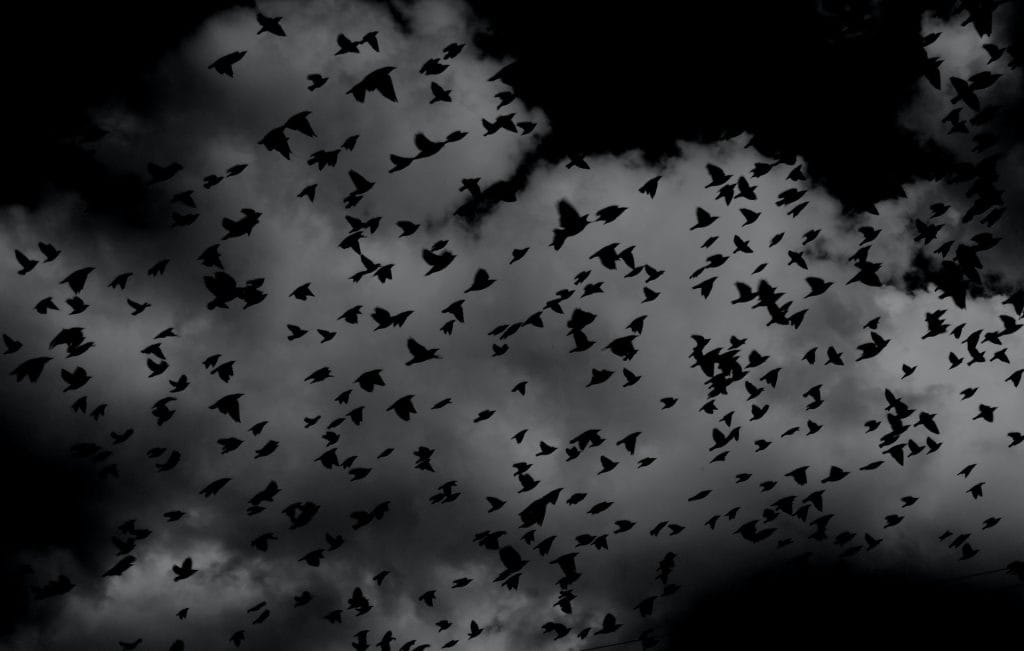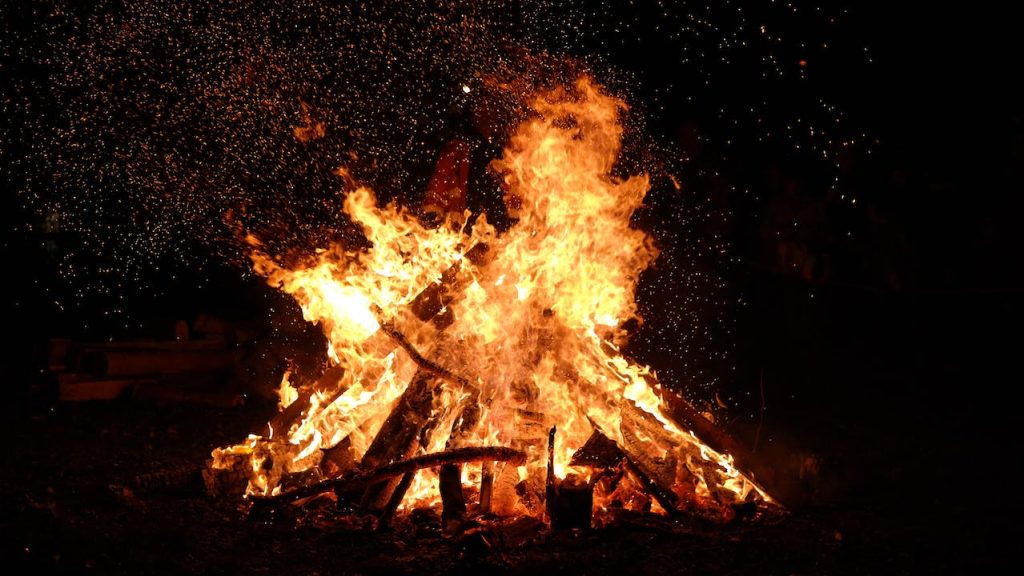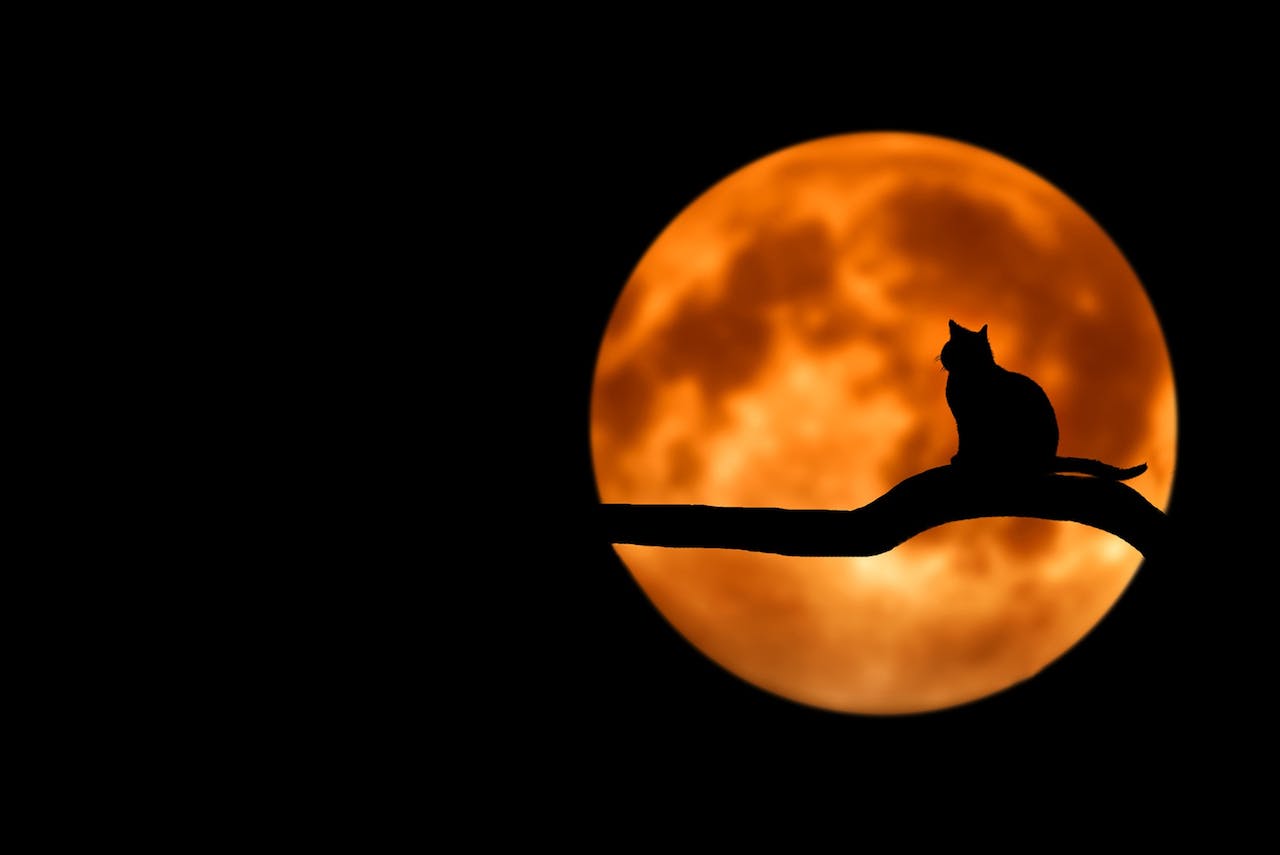Listen Up! Five Spooky Choral Works to Set the Mood for Halloween
Every fall as soon as we get our first chilly evening, I find myself in the mood to be scared. Usually, this means turning on a scary movie and cuddling up with some hot apple cider and a cat. But this year, I’m leaning in to the creepy, spooky choral music. Here are five of my favorite spooky choral works to get you ready for Halloween:
Are you teaching any of these pieces to your ensemble or want your group to get to know the pieces in addition to their repertoire? Take a look at my Halloween Listening Teaching Resources!

Creepy, Spooky, Ominous Listens
There are so many cool Halloween choral works to feature during the month of October. These are just a few of my favorites! Be sure to share your favorites in the comments below.
Double, Double Toil and Trouble
There are several choral versions of the “Double, Double Toil and Trouble” text, taken from William Shakespeare’s play, Macbeth. This text is a rhyming couplet chanted by the supernatural three witches who represent temptation and evil.
As a person who grew up with Harry Potter, John Williams’s “Double, Double Toil and Trouble” from the HP franchise is frequently a part of my Halloween listening. But, today I want to focus on Jaakko Mäntyjärvi’s version of “Double, Double Toil and Trouble.”
Created by Finnish composer and musicologist Jaakko Mäntyjärvi in 1984, this setting of the “Double, Double Toil and Trouble” text evokes the truly unhinged nature of the guilt-ridden Macbeth. Mäntyjärvi’s composition heightens the creepiness of the witches and their un-natural speaking cadence. Check out a great video of the University of Utah Singers performing this piece here.
Daemon Irrepit Callidus
One of the first creepy-sounding choral works I sang in high school was “Daemon Irrepit Callidus” by Romanian-born Hungarian composer György Orbán. With driving eighth note repetitions, ever-present chromaticism, and lyrical melodies throughout, this piece left quite the impression on 14-year-old me.
The text begins: “The Demon (or Devil) sneaks expertly, tempting the honorable heart: He sets forth trickery amidst praise, song, and dance.” With allusion to temptation, gluttony, lust, and pride, this text can open choirs up to conversation about the scary things that we encounter on a daily basis.
Check out the Ars Nova Vocal Ensemble’s performance of this piece here.

Nox Aurumque
When you think of composer Eric Whitacre, I’d guess you don’t first think of spooky and creepy sounds. I certainly don’t! But Whitacre’s signature etherial and dissonant composition style lends itself well to setting a darker mood within his Nox Arumque.
Written as a companion piece to his Lux Arumque (meaning ‘Light and Gold’), Whitacre used themes from a few of his previous pieces to create Nox Arumque (‘Dark and Gold’). The text, written by poet Charles Anthony Silvestri after Whitacre had completed the melodic composition, details the anguish of an angel as it considers death, war, and flying once more.
Read more about Whitacre and Silvestri’s collaborative process here and watch the composer conduct the piece with VocalEssence and the St. Olaf Choir here.
Lux Aeterna
György Ligeti used dense harmonies and dissonant cluster chords to create an eerie, otherworldly sound in his Lux Aeterna. Published in 1966 and featured in Stanley Kubrick’s 1968 film 2001: A Space Odyssey, this choral work communicates a sense of yearning and mourning throughout.
György Ligeti was a Hungarian composer known for his innovative and avant-garde approach to music. His works often featured complex and intricate textures, and he is considered a pioneer of micropolyphony.
Take a listen to György Ligeti’s Lux Aeterna performed by A Cappella Amsterdam here.

Fire
The last, and certainly not least, of our five Halloween Choral Works, is Katerina Gimon’s Fire. Fire is one of four choral works that makes up the set Elements. This set invites singers and listeners to explore the voice as a versatile instrument, utilizing overtone singing, vocal percussion, and colorful timbres, all on non-traditional syllabic text.
Through lively and energetic calls, body percussion, and nonsense syllables, singers performing Fire can set quite the ominous scene for their audience members. Take a listen to the Texas All State Treble Choir’s performance of Fire here.
More Choir Concert Themes
Looking for some other choir concert themes? I’ve got you! Take a look at some of my other choir concert themes by clicking the links below:
- “Family” Choir Program: Repertoire Roundup
- “How Sweet the Sounds” Choir Program: Repertoire Roundup
- Winter 2022 Choir Program: Repertoire Roundup
- “Elements” and “Ascend”: Middle School Festival Programs Rep Round-Up
- Concert Repertoire Roundup: “Singing our Roots”
I’d Love to Hear from You!
What other must-listen spooky Halloween Choral Works are on your October playlist? Have you sung or conducted any of the featured pieces with your choir? How were your performances received? Let me know in the comments below!
Teacher Resources!
Choral Works for Halloween Guided Listening Worksheet
This worksheet for choral students asks students to critically listen to the five choral pieces featured in this post. Further, utilizing this worksheet, students will investigate the stories behind the works, draw comparisons between the compositions, and apply their insight to their own repertoire. Use this worksheet as homework, a sub day activity, in-class work, make-up assignment, or more. Check out the worksheet here!

Join the Choir Curriculum Catalyst!
Choir leaders! Do you find yourself struggling to decide what to teach on a day-to-day basis and lacking consistency with curriculum in your choral spaces? My strategic plan is here to help you overcome decision fatigue and learn a REAL process for shaping your choral curriculum – for whatever ensemble you lead! Learn more about the Choir Curriculum Catalyst and join the waitlist for the next course offering here!












